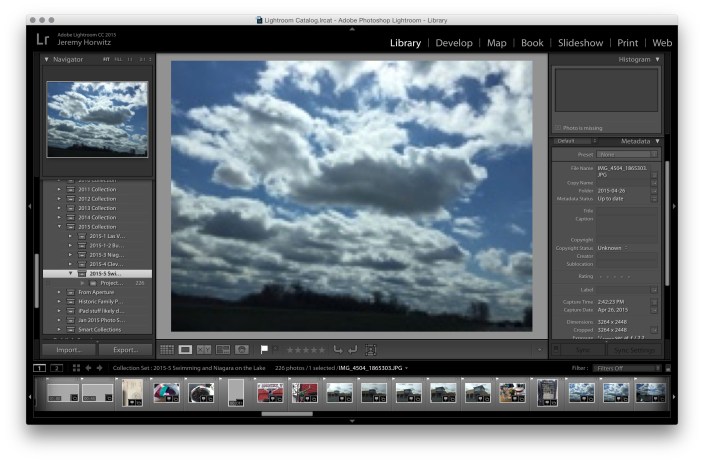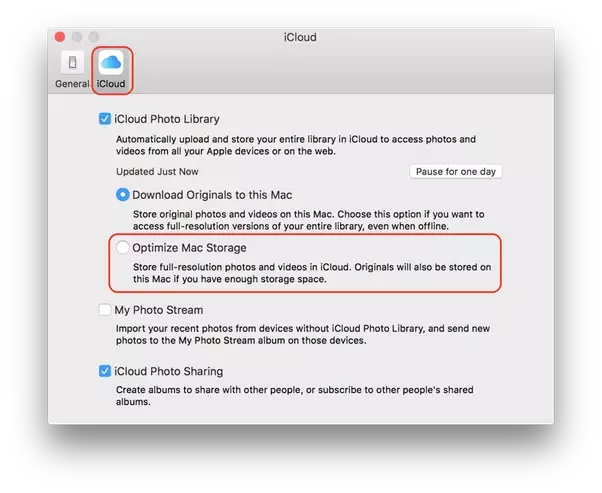Lightroom Import Mac Photos Library
Here's how you can quickly migrate your photos from the Photos app or Aperture on macOS to Lightroom Classic.
Lightroom needs to be able to import Apple Photos libraries (exactly like importing iPhoto or Aperture library) keeping the tagging, folders, etc. I moved my Aperture/iPhoto library to Photos.then a couple of months later, decided I wanted to use Lightroom.

On a PC use CTRL – click, on a Mac use Command – click. Do this anywhere on each photo you want to import. It will highlight the box (thumbnail) of each photo, but it will not put a check in the checkbox. Now that you have all your photos selected, all you need to do is click the little checkbox on one of those selected photos (it doesn’t matter which one) and the checkbox will be checked on all selected photos. To migrate from iPhoto: In Lightroom, go to File Plug-in Extras Import from iPhoto Library. Select the location of your iPhoto library and choose a new location for your images. Click the Options button if you want to change any settings prior to migration. Click the Import button to start the migration.
Back up your catalog, if you have an existing Lightroom Classic catalog.
In Lightroom Classic on macOS, choose File > Plug-In Extras.
Select either Import from Aperture Library or Import from iPhoto Library.
Note:
If you want to migrate specific photos from your Aperture library to Lightroom Classic, export them to a new Aperture library and then migrate the new library.
Your libraries are automatically detected.
You have the option to select a different library, if applicable. Your images will be copied to a new location. A default location is listed, however you can also choose a different folder.
Click Options to see how Lightroom Classic works with available previews, keywords, color labels, and stacks.
ICloud Photos gives you access to your entire Mac photo and video library from all your devices. All your photos on all your devices. You can also optimize storage on your iPhone, iPad, and iPod touch, so you can access more photos and videos than ever before.
 You get 5GB of free storage in iCloud — and as your library grows, you have the option to choose a plan for up to 2TB. When you choose “Optimize Mac Storage,” all your full‑resolution photos and videos are stored in iCloud in their original formats, with storage-saving versions kept on your Mac as space is needed.
You get 5GB of free storage in iCloud — and as your library grows, you have the option to choose a plan for up to 2TB. When you choose “Optimize Mac Storage,” all your full‑resolution photos and videos are stored in iCloud in their original formats, with storage-saving versions kept on your Mac as space is needed.
Jun 22, 2016 The Lightroom plugin is designed to import the images from Apple's iPhoto, however now iPhoto is not supported by Apple and it has been changed to Photos app, that is the reason you are getting the above message. Dec 04, 2017 Before the Photos app began storing the master files within the package contents, one could setup LightRoom to watch the folder of iCloud Photostream masters, enabling Lightroom to automatically import all photos from the iCloud Photostream. This process required a MacOS.
METADATA
- Flags
- Star Ratings
- Keywords
- GPS Data
- Faces: Face naming tags are mapped to keywords
- Rejects: Files designated as Rejects in Aperture are imported into Collections > From Aperture > Photos Rejected in Aperture
- Info Panel metadata that can be entered in the Info panel (i.e. IPTC)
- Hidden Files: Files designated as Hidden in Photos are imported into Collections > From iPhoto > Photos Hidden in iPhoto
- Aperture Color Labels: Color Labels are mapped to keywords: Red, Orange, and so on, including support for custom label names
ORGANIZATION
- Aperture Stacking: Stacks information is mapped to keywords: Aperture Stack 1, Aperture Stack 2, and so on
- Aperture project/folder/album hierarchies are mapped as closely as possible into Lightroom Classic collection sets and collections
- Photos events/folders/albums are mapped as closely as possible into Lightroom Classic collection sets and collections
- Aperture Versions translate into Virtual Copies in Lightroom Classic (without adjustments)
EDITS
- You can choose to importfull-size JPEG previews of your edited images from Aperture/Photos, if they are up-to-date. This option is off by default. Lightroom Classic can automatically stack the preview with the original photo.
- Full-size JPEG previews generated from files with settings don't include metadata that has been applied to the master (keywords, star ratings, flags, GPS data).
- Full-size JPEG previews are duplicated if imported first by the same Photos library and then later from a library upgraded from Photos to Aperture (due to a difference in filename).
Note:
The plug-in supports migrating both managed and referenced Aperture and Photos libraries.
- If your files are managed by Aperture (Aperture's default) Lightroom Classic leaves them where they are and duplicates them in your chosen location.
- If your files are referenced by Aperture Lightroom Classic gives you the option of leaving them in their current location, or duplicating them in a new location.
What does not get migrated to Lightroom Classic?
Some Photos/Aperture features are not compatible with Lightroom Classic. This includes:
Lightroom Import Photos From Iphone
- Image adjustments: Aperture and Lightroom use different image processing engines, so Lightroom cannot read adjustments made in Aperture. You can do one of the following:
- Re-edit your file using Lightroom Classic.
- Use Aperture to export full resolution edited photos and store them with the originals.
- Smart Albums
- Face Tag Region of Interest: Face naming tags are mapped to keywords
- Color Labels: Optionally as keywords
- Stacks: Optionally as keywords. Aperture shares stacks between albums, Lightroom does not
- Any kind of creation (books, web galleries, and so on) other than the collections that correspond to them
- PSD files can be imported into Lightroom only if they’re saved with ‘maximize compatibility’ enabled.
More like this
Import Into Lightroom
Twitter™ and Facebook posts are not covered under the terms of Creative Commons.
Remove Photos From Lightroom Library
Legal Notices Online Privacy Policy